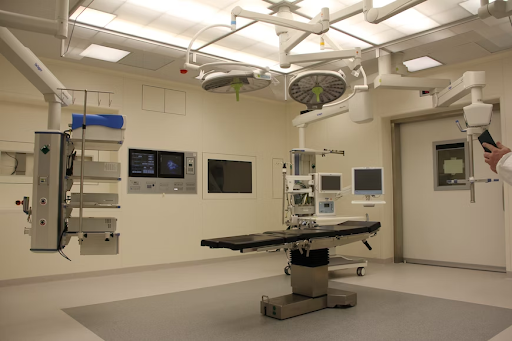Medical equipment plays a crucial role in patient care. Without the right tools, diagnosing and treating medical conditions would be more difficult and less effective. In recent years, technological advancements have brought us new medical devices that are changing the way we care for patients. In this blog post, we will explore some of the latest innovations in medical equipment and their impact on patient care.

Wearable medical devices
Wearable medical devices are a type of technology that is becoming increasingly popular in patient care. Wearable devices consist of electronic devices or sensors that are worn by patients to monitor various health parameters. Examples of wearable medical devices include smartwatches, fitness trackers, and continuous glucose monitors.
The benefits of using wearable medical devices in patient care are numerous. The team at saveritemedical.com recognizes the importance of wearable medical devices and their potential patient benefits. Wearable devices such as smartwatches, fitness trackers, and continuous glucose monitors can provide patients with real-time data on their health and wellness. This data can help patients stay on track with their treatment plans and give healthcare providers valuable insights into patient health.
However, there are also challenges and limitations associated with using wearable medical devices. One limitation is that not all patients may be comfortable wearing a device 24/7, leading to incomplete data collection. Additionally, some devices may not be accurate enough for clinical use, and there are concerns about data privacy and security. Thus, find a medical supply that is committed to providing high-quality wearable medical devices to patients to improve their overall health and well-being.
3D printing technology
Another emerging technology in medical equipment is 3D printing. 3D printing is a type of manufacturing process that creates three-dimensional objects from a digital design. In healthcare, 3D printing technology is used to produce medical equipment such as prosthetic limbs, implants, and surgical tools.
One of the advantages of using 3D printing technology in patient care is that it allows for customized medical equipment that is tailored to each patient’s unique needs and anatomy. This can lead to better outcomes and fewer complications. Additionally, 3D printing can reduce costs and decrease the time it takes to produce medical equipment.
However, there are also limitations and challenges associated with using 3D printing technology. One challenge is ensuring the safety and efficacy of 3D printed medical equipment. There are also concerns about regulatory oversight and quality control.
Artificial Intelligence (AI) in medical equipment
Artificial intelligence (AI) is a type of technology that is increasingly being used in medical equipment. AI involves creating computer algorithms that can perform tasks that typically require human intelligence, such as pattern recognition and decision-making.
Examples of AI-powered medical equipment include diagnostic tools and robotic surgery systems. The benefits of using AI in patient care include faster and more accurate diagnoses, improved surgical outcomes, and reduced healthcare costs.
However, there are also ethical considerations and potential risks associated with using AI in patient care. Some concerns include the potential for biases in algorithms and the loss of jobs in healthcare due to automation.
Telemedicine and remote monitoring
Telemedicine and remote monitoring are technologies that allow for patient care to take place remotely. Telemedicine involves using video conferencing technology to have virtual consultations with healthcare providers. Remote monitoring involves using sensors and other devices to monitor patient health from a distance.
The benefits of using telemedicine and remote monitoring in patient care include increased access to healthcare, reduced costs, and improved patient outcomes. These technologies can be particularly helpful for patients who live in rural or remote areas, where access to healthcare can be limited.
However, there are also challenges and limitations associated with using telemedicine and remote monitoring. One challenge is ensuring that patients have access to the necessary technology and know how to use it. Additionally, not all medical conditions are suitable for remote monitoring, and there may be concerns about the accuracy of data collected remotely.
In conclusion, the latest medical equipment innovations are changing how we care for patients. Wearable medical devices, 3D printing technology, artificial intelligence, and telemedicine and remote monitoring are just a few examples of the new technologies that are transforming patient care. While challenges and limitations are associated with these technologies, their potential benefits make them an exciting healthcare development area.
It is important to continue investing in research and development of medical equipment to advance patient care further. With continued innovation and advancements in technology, we can improve patient outcomes, reduce healthcare costs, and increase access to care. The future of healthcare is bright, and we look forward to seeing what new technologies will emerge in the years to come.
Interesting Related Article: “Micro Injection Molding: Benefits and Challenges in Medical Device Manufacturing “
